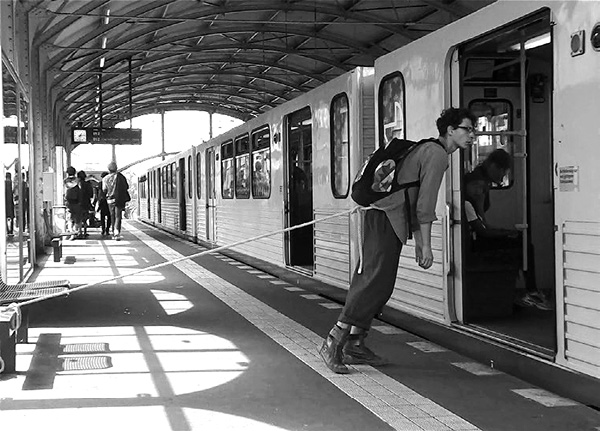
HEIMAT OBSTRUCTION
first performed on
August 11, 2011
Berlin, Germany, Berlin, Germany
performed five times in 2011
RICCARDO ATTANASIO
London, UK
544390480m544390480a544390480t544390480l544390480a544390480k544390480a544390480s544390480@544390480g544390480m544390480a544390480i544390480l544390480.544390480c544390480o544390480m
matlakas.com
HEIMAT OBSTRUCTION
RICCARDO ATTANASIO
Part of the Art-Riot project is a series of street actions titled “Heimat Obstruction,” which have, so far, been performed in Berlin, London and Milan.
As part of “Art-Riot” I wanted to take the space that has been denied to me by Bureaucracy. My aim is to explore the boundaries of convention, how strong habits of everyday life are bound to us. We have rules that have become part of our genetic code, which has sculpted our perceptions, making them almost too solid. Rules lead us to behave in a certain way. I work in the streets as a means of a personal appropriation of the city where I live. When I do a street action I often have to deal with police, irritated citizens, and strange glances, but at the same time I have plenty of satisfaction which comes from smiles, interest, willingness to understand what my action is about and why I am doing it, and interesting conversations with people I meet. When I perform in the street I like to be focused, but I never ignore the people around me because they are part of it. My aim in art is to be able to open people’s perception and at the same time my own. A painting, a performance in the theater or in the street has the aim of connecting us as human beings.
When I tie myself to a bench on a train platform it has a paradoxical inner meaning. Doing something that apparently is in the norm of behaviour, following the crowd, feeling free to do whatever I want, but at the same time caged. Society makes us believe we are free but there are so many rules to be respected and so many restrictions such as money and so many hierarchies such as different levels of power.
When the train arrives I am faced with an abundant flow of people, who step in and out of the train. Unobserved, I follow these people who enter the train until I am impeded by the rope. When everyone is already on the train and I remain, there is a concrete moment, time stops until the picture is well established in the people’s perception and in the driver of the train. I look inside the train, almost like I want to ask for help, but everyone looks at me doubtful or just smiling. The door closes but the picture and the wonder stays in the people’s mind, a sort of mechanism is perhaps activated in their brains.